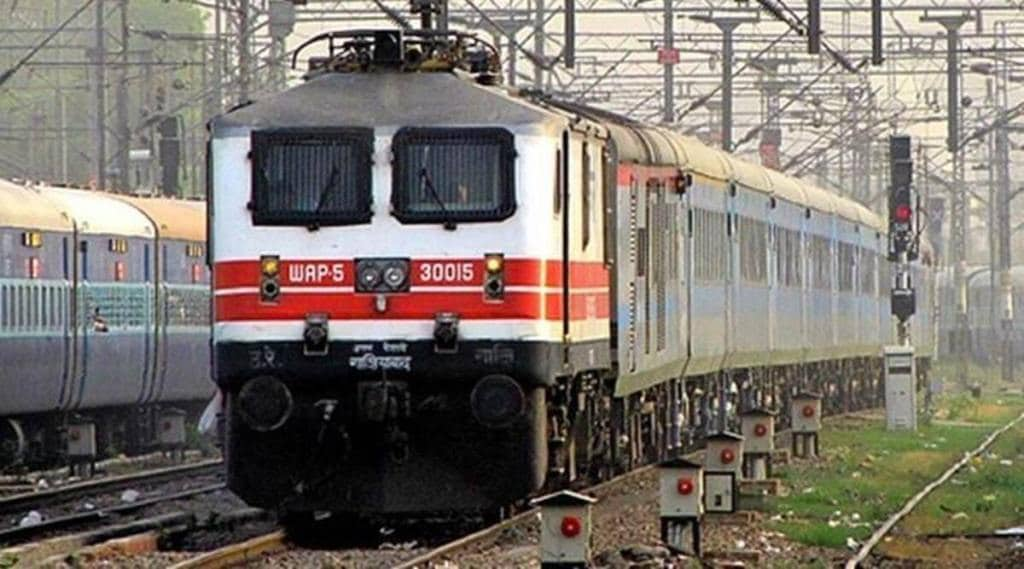By Viral Joshi
A significant element in India’s transport decarbonisation strategy involves improving the Railways’ market share to at least 45% in total freight transport by 2030. It is currently estimated to be at around 26%. Restoring Indian Railways (IR) as a national carrier with a dominant market share is a desirable step as it remains the most environment-friendly mode of land transport.
From the perspective of decarbonising India’s transport sector, focussed initiatives to energise the rail freight business and achieving greater modal share in freight movement is necessary. The government has committed huge investments to augment the line capacity of the railway network, including the construction of Dedicated Freight Corridors. Additionally, the Railways has launched massive electrification of almost the entire network, enabling the movement of citizens and goods involving near-zero carbon emissions.
Augmentation of route capacity and new lines have definitely reduced the transit time, thereby assuring timely delivery of goods. Even as detentions at loading and unloading terminals are responsible for almost three-fourths of total transit time, innovations in terminal operations have received little attention.
Loading and unloading operations at almost all goods sheds are done manually, and deficient facilities, scarce mechanisation, and labour shortage often make detention of wagons and goods a common feature. Comprehensive assessment of issues related to terminal operations and remedial measures are far from satisfactory except at a few places. Many freight terminals remain under restriction for days together due to operational constraints, inadequate handling capacity, and other reasons. During 2019-20, around 500 terminals were under restriction for varying periods across the IR network. About 20 terminals were under restrictions for about three months in a year.
Poor release of wagons and heavy pipeline are the most common reasons (91.5%) behind imposing restrictions on further loading by the Railways. Poor release may occur due to inefficient loading/ unloading practices. A heavy pipeline may develop as demand is higher than existing capacity and the terminal needs either expansion or a new terminal to handle the increased traffic. The need is to develop a few but efficient terminals at high demand places. Uncertainty at the unloading terminals could be a reason to explore other options; a recurring and long terminal restriction could deprive Railways of its legitimate traffic.
The manual loading-unloading system of the IR is not only time-consuming but also gets easily affected by factors like labour management and climatic conditions. For areas where freight loading/unloading suffer due to labour issues, mechanisation can work as a better solution to leverage round-the-clock working of terminals. Along with mechanised loading/unloading systems, availability of warehouses will facilitate a faster and round-the- clock clearance of goods, and wharf will be available for placing new rake.
The Railways may consider taking the initiative to introduce mechanised loading/unloading operations at railway goods sheds and start a pilot project in perpetually heavy demand areas by appointing a mechanised handling agency that could undertake loading/ unloading operations at a pre-determined rate, the cost of which can be borne by the user. The Railways can expand its collaboration with Central Warehousing Corporation to develop a larger number of warehouses with mechanised loading/unloading system on railway owned goods sheds. Based on such pilot projects, IR needs to develop its own set of commodity-specific guidelines for mechanical operations.
Infrastructure upgradation and mechanisation will enable the faster evacuation of goods within the free time. It will result in lesser incidences of heavy demurrage and wharfage penalties, removing the unnecessary burden on private players.
Realising the potential of privatisation in increasing the efficiency of terminal operations, IR continues to promote the development of private sidings and private freight terminals under ‘Gati-Shakti Multimodal Cargo Terminal (GCT) Policy, 2021’. Along with easing the application and terminal development conditions, IR has directed zonal railways to open railway land for the freight terminal development. Easy availability of land will attract more players. Assisted sidings also can result in the development of greater number of freight terminals as the development cost will be divided between the Railways and the private player.
While the development of private freight terminals is taking place, the Railways should also focus on improving the existing terminal infrastructure, including access roads, to maximise efficiency. The integrated development approach, where key industrial units and logistics parks, national and state highways and rail freight terminals are incorporated, will not only improve the operational feasibility, but will also capture new traffic.
It is high time for IR to bring in infrastructural and institutional changes focused on freight terminal infrastructure and management in order to meet the envisioned freight demand of 3,000 MT per annum by 2027.
(The writer is a Research Associate at The Energy and Resources Institute – TERI)


